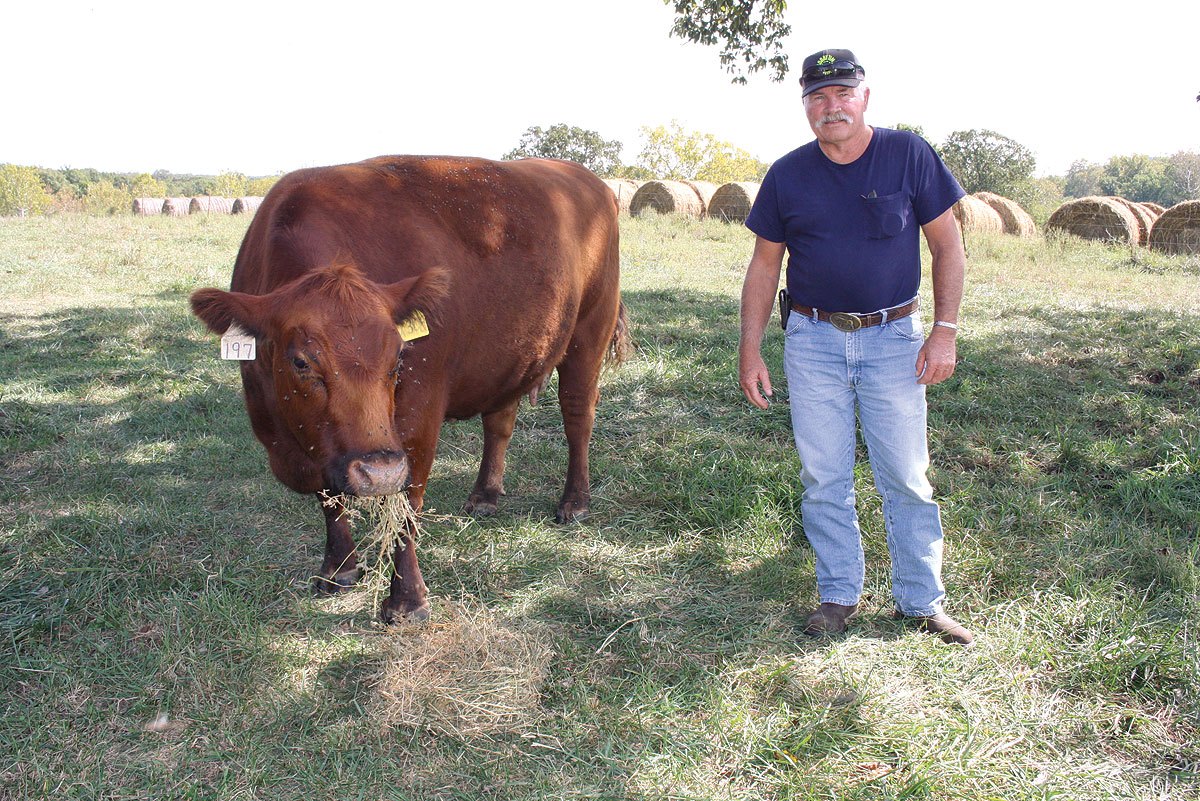
Andy and Jennafer Johnson wanted to do something with their land, but did not want to raise livestock
WEBB CITY, MO. – Andy Johnson and his wife Jennafer purchased a home with 40 acres in Webb City, Mo., in 2003. Neither one of them had an agricultural background, but they had a desire to do something more with the land they just purchased.
“We didn’t want to have livestock and didn’t have the equipment to row crop,” Andy explained. “We could have leased it and even tossed around the idea of blackberries or blueberries. We thought, how fun would it be to have our own Christmas tree farm since we both enjoy getting a real Christmas tree each year.”
They never had real Christmas trees growing up, but it started when they married in 1999 and began their own family tradition.
In the spring of 2006, Andy and Jennafer planted 1,000 trees to begin the Bridgestone Christmas Tree Farm. They joined a Christmas tree growers association to collect information and learn more about their new adventure.
“It takes six to seven years for trees to grow. Christmas trees are really resilient, but they do not like to be wet. They like rocky and acidic soil, so you do not really have to treat the soil, and we have fairly good topsoil about 16 inches down then it’s clay right underneath and no rocks.”
For four years, they continued to plant around 500 to 1,000 2-year-old, 12-to-16-inch seedlings each spring.
They have 100 Christmas trees in their field awaiting the perfect family this year.
“I go through and mark the holes ahead of time, then start digging a couple of hours before we start planting,” Andy said of the planting process.
They have a tractor with a post hole auger to dig the holes, but they plant each tree by hand. They space each seedling 8 feet apart to allow for better wind flow.
“It helps dry them out and has helped fight fungus. It is double the mowing but in the long run, it was the best decision,” Andy said. They have about 8 acres planted in trees, but Andy said they can always expand if needed.
“We have several families that come quite a distance. It’s just fun seeing the same families come back year after year.”
— Andy Johnson
“Our main trees are Scotch pine,” Andy said. “Four years ago, we started planting Virginia pines as they grow faster than the Scotch pines. They must be pruned three times a year versus once a year because they grow so rapidly. The Virginia pines should be ready next year.”
They also buy up to 300 each year from a large tree farm in Michigan. They began they began to buy precut trees to sell after about give years.
There have been a few challenges through the years. At one point, they were losing 500 to 600 trees a year due to a fungus brought on by the wet summers. This year was the first they have not had to deal with the fungus. Andy has worked with a Jasper County forester to help diagnose any diseases or pests they might have.
“When we were fighting the fungus, the forester was really good at coming out, taking samples to send off to the nursery, and helping us put together a treatment plan,” Andy said.
They now proactively spray an insecticide/fungicide mix starting in early spring when the trees are starting to put on new growth and then continue to treat them every four weeks for up to four treatments.
“You have to time it just right as it needs to be on for about 72 hours before rain,” Andy explained.
Andy often sprays by hand but also uses an ATV sprayer on a trailer with a boom behind the lawnmower or golf cart to go down the rows and spray the small trees early on. The larger trees are pretty drought resistant.
“We don’t spray for weeds but mow between the rows, which takes about 12 hours every week to every other week. I pass every tree four times when I’m mowing, so I get the opportunity to look and inspect the trees on a regular basis through the summer.”
“In early September, I know the trees we are selling and spray them with a green colorant and mix it with an insecticide to help the trees. The colorant also has needle retention built in, so the tree holds its needles even if it dries out once you cut it down. That is the last thing I do to them.”
Andy said they also host field trips throughout the year sharing information on how trees grow, various parts of the tree, how long it takes to grow trees and what it takes throughout the entire year, not just at Christmas time.
The Christmas tree farm opens each year on Thanksgiving weekend for two to three weekends; however, they sold out the second weekend last year. Their average trees are about 5- to 8-feet tall, with some precuts 10- to 12-feet tall.
The Bridgestone Christmas Tree Farm offers fun activities for the whole family, including a kids train ride, a family hayride, handmade crafts from local vendors, free hot cocoa and cider and a kid’s corner where the kids can color a Christmas picture and write a letter to Santa to mail at the tree farm.
“We have several families that come quite a distance. It’s just fun seeing the same families come back year after year,” Andy said.







